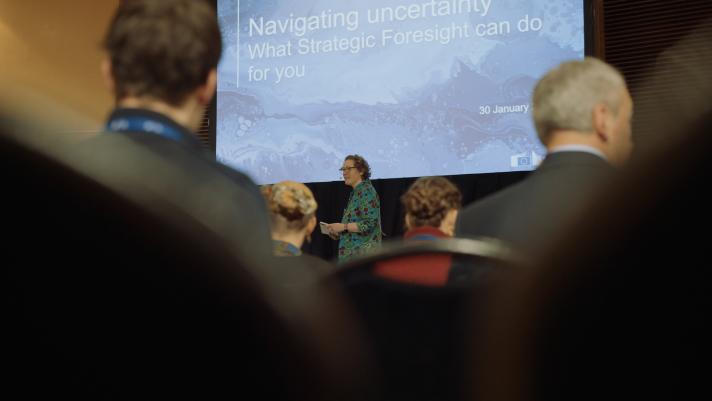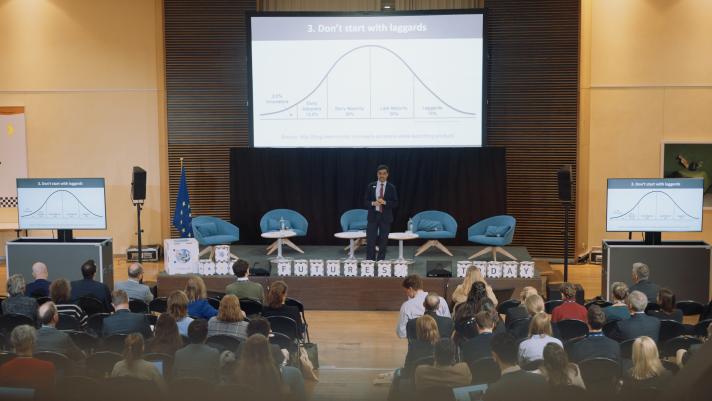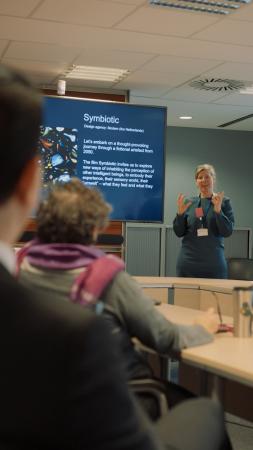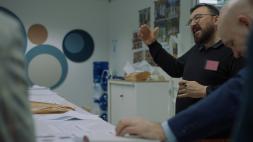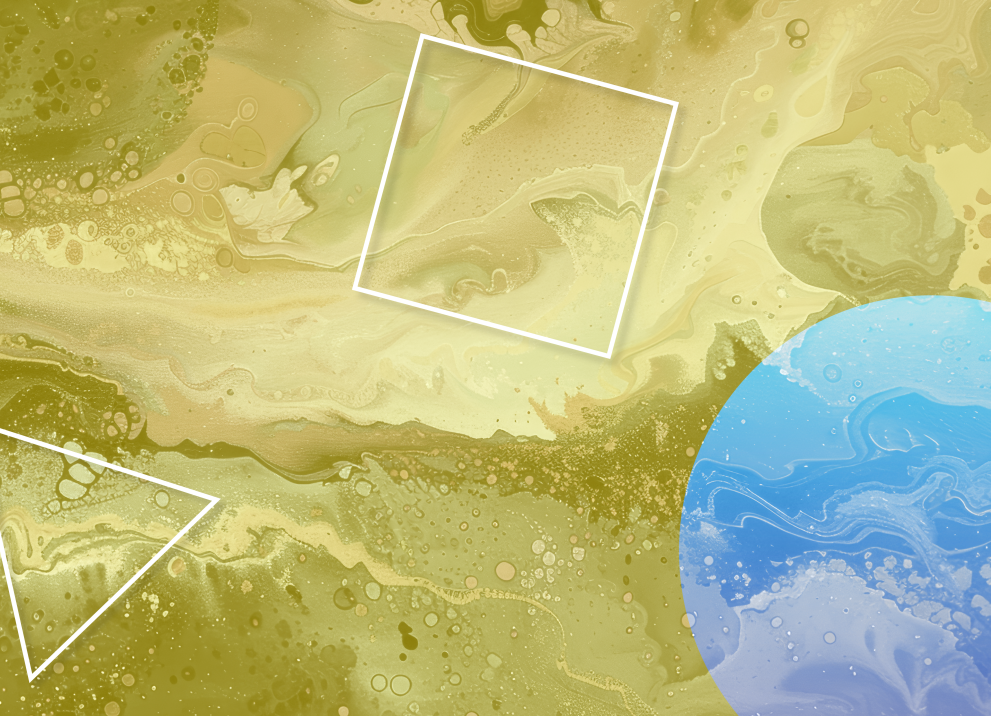
At the end of January, we hosted an EU Policy lab event for the colleagues in the European Commission and especially the new advisors to the newly appointed Commissioners to make a winning case for how policymaking can benefit from foresight in the new mandate, while also giving them the chance to test some of our foresight tools themselves.
Our moderator and Deputy Head of Unit Antonia Mochan kicked it all off by introducing the EU Policy Lab’s unique approach for innovative policymaking combining foresight, behavioural insights and design for policy.
Inspiration from leading futurists
In his keynote address, Dr Aaron Maniam from the Blavatnik School of Government, University of Oxford and founding Head of the Singapore Centre for Strategic Futures – a well-known expert in the foresight world – shared his experiences with strategic foresight in large public organisations. With humour and a wealth of reassuring anecdotes, he shared the three ingredients for successfully using the power of foresight:
- a good supply of foresight,
- a real interest for it to live up to its potential and
- the right ecosystem to keep it active.
A good supply of foresight needs to trust the fundamentals of futures thinking but also make it user-centred and fit for the specific context and different needs of users. For a real interest in foresight, we need good partners that have enough understanding of the discipline and courage to be challenged. This is where the role of good sponsors, stewards and shields are key to convince others in a big organisation – such as the European Commission or any government. The best ecosystem for foresight depends on the organisation but, as Dr. Maniam put it, it shouldn’t start with the laggards but rather with early adopter and innovators. The key is in building competence and understanding the possibilities of foresight.
Hands-on foresight
Participants were then invited to test some of our foresight tools in a series of demonstrations including Megatrends assessment, Horizon scanning, scenario building, screening of the Futures Garden short film, a sneak-peak into our new Polycrisis Exploration tool and an exercise with signals of emerging technologies.
Many of these foresight tools are available on the Knowledge for Policy website
Testimonials from the Commission
We closed off the foresight tour de force with a panel discussion sharing concrete experiences with strategic foresight in the European Commission policymaking context. Senior managers from agriculture, international development and cooperation, and climate, together with Dr Aaron Maniam shared their experiences on using foresight:
- The Directorate-General for Agriculture and Rural Development has a long experience with using foresight: from developing a vision on rural areas and exploring the future landscape and professional roles of farmers, to using participatory foresight methods to identify long-term implications of the digital transition for EU farmers and rural communities. To make the insights of this foresight study actionable, the EU Policy Lab has developed a toolkit that supports policy makers to develop a strategy for agricultural digitalisation in a participatory way, starting from purpose, values and principles.
- The Directorate-General for International Partnerships has been mainstreaming foresight in their work step by step at various entry-points. They have created an internal Foresight Hub receiving methodological support from the EU Policy Lab, have applied foresight to existing programmes as part of the review process and used it to design new regional actions. They have also used foresight techniques to successfully engage with young people in the framework of the Youth Action Plan in EU external action.
- The Directorate-General for Climate Action has recently started its foresight journey. They have explored scenarios of future developments across society and the economy to prepare the EU Climate risk assessment (EU CRA). Foresight also helps all services take possible climate futures into account.
Lessons learnt
Given the positive feedback after the event – this will not be a one off! But in the meantime, here are some of our key takeaways for European Commission colleagues (or any organisation) hesitating whether to use foresight:
- Start with small-scale exercises, gradually scaling up.
- Reach out for support to the EU Policy Lab and its foresight experts.
- Invest in training and knowledge sharing to equip staff with futures literacy and foresight knowledge.
- Use foresight techniques as a collaborative tool, harnessing the collective intelligence of diverse experts and teams.
- Make time for foresight, use a participative format and prepare well for the exercises.
- If you are an early adopter in your organisation, keep networking and look for like-minded colleagues in other parts of the organisation to support you.
Sign up to the EU Policy Lab newsletter to stay up to date with our latest products and events.
Details
- Publication date
- 25 March 2025
- Author
- Joint Research Centre
- Departments
- Directorate-General for International Partnerships, Directorate-General for Agriculture and Rural Development, Directorate-General for Climate Action
- EU Policy Lab tags

